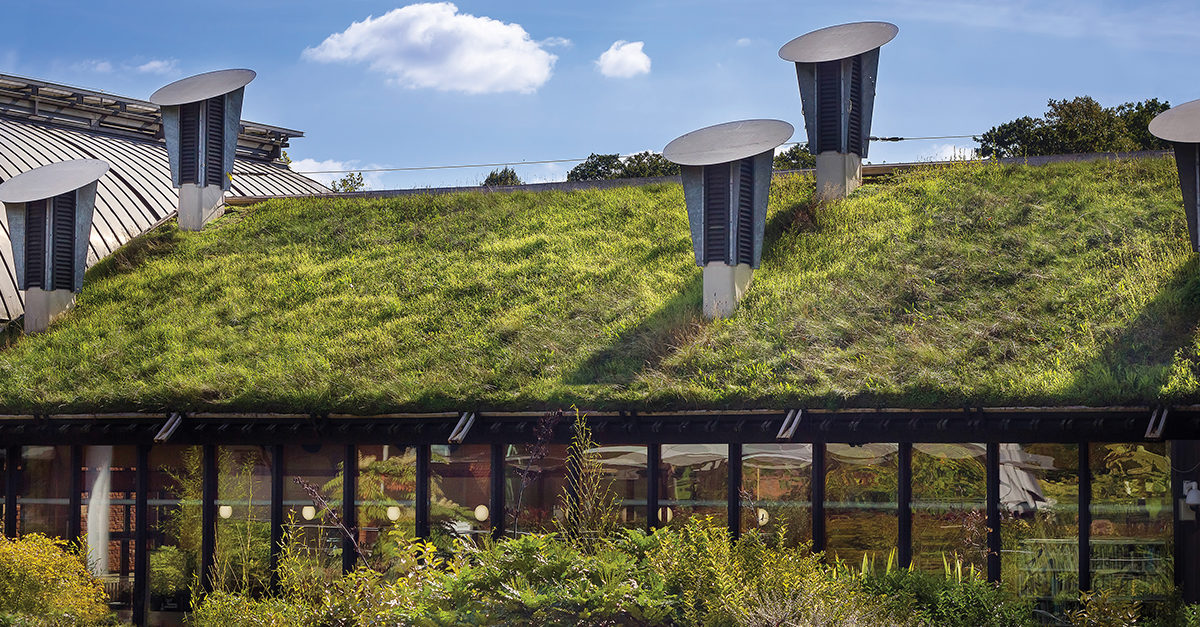A growing trend in cities across the country, green roofs provide both aesthetic appeal and ecological benefits for building tenants. In addition to offering credit towards Leadership in Energy and Environmental Design (LEED) certification, green roofs can reduce energy consumption, help mitigate the effect of heat islands, and filter acid rain and air pollutants.
Despite these wonderful benefits, there’s a reason for caution: The greenery on your roof could be putting your facility at risk for a pest invasion.
As you know, pests are more than just a nuisance. In addition to alarming your building’s occupants, pests can pose a health hazard. Rodents and birds can transmit disease while stinging insects can cause serious allergic reactions in some people. Pests also can cause structural damage. Bird droppings, for example, can have an erosive effect on building surfaces. If left unchecked, pests can spread to other parts of your building through cracks and crevices, as well as gaps in pipes, doors, and fixtures.
To help combat the threat of increased pest activity on your property, it’s important to know what types of pests to look for in your green roof, and what proactive steps you can take to keep them away.
Plant-Feeding Insects and Ants
The rooftop soil and vegetation creates an attractive sanctuary for pests, offering easy sources of food, shelter, and water. Plant-feeding insects like aphids can be found on plant stems and leaves feeding on liquid juices within the plant. They produce a “honeydew sap” that also draws in other pests, especially ants. Ants can nest almost anywhere, even under fountains. Their colonies can number up to 500,000 and they uproot when disturbed or threatened.
Mosquitoes
Especially in the warmer months, mosquitoes take refuge near standing, stagnant water sources, many of which can be found on roofs; they also lay their eggs in these areas. One female mosquito can lay as many as 400 eggs, which can develop into adult mosquitoes in just one week. Your building occupants and guests are sure to notice mosquitoes buzzing around, as their bites can cause skin irritation and even spread disease.
Stinging and Nesting Pests
Some pests that seek out green roofs will build a nest there. These nests can be tricky to remove, so consult your pest management professional before attempting removal yourself.
Stinging pests like bees, hornets, wasps, and yellow jackets are attracted to flowers and water fixtures. They can build nests inside gutters, within trees, in bushes, on the corner of the building, and in exterior wall voids.
Birds may use your landscaping as a nesting site as well, enticed by the shelter and abundance of food and water it provides. Birds can build nests under plantings and in other protected areas. A telltale sign of bird activity is their droppings and the presence of perched birds along the side of the roof.
Rodents
Rodents, especially rats, may take refuge on green roofs, burrowing through vegetation and mulch as they feed on ornamental plants. One sign of rodent activity is their droppings—rat droppings are about the size of a raisin. You should also keep an eye out for gnaw marks and holes around doors or utility lines.
Rats can enter the building through holes as small as a quarter. Greasy rub markings along walls, conduits, and support beams could indicate a rodent is travelling regularly along that path and looking for its next way into the building.
Maintenance Routines
The roof can be commonly forgotten when constructing maintenance routines. Including it in your maintenance schedule is the key to helping prevent and reduce pests on your green roof.
As you develop an integrated pest management plan, proactive inspection, sanitation, and maintenance of the roof should be the three main components of your strategy. It’s important to regularly monitor and inspect plantings, dining areas, and fixtures.
Prevention Tactics
Exclusion tactics also help prevent pests from getting into your building in the first place. Here are some things that you can do to keep pests off your green roof and out of your building:
- Pick proper vegetation. Avoid plants that produce nuts, fruit, and seeds, as these plants attract pests looking for food. Talk to your pest management or landscape provider about other species of vegetation you should avoid and where to plant to help mitigate pest activity.
- Use cedar mulch instead of organic mulch. Cedar mulch repels certain types of ants, such as the Argentine ant. Also, reduce heavy mulch cover in planters and ivy overgrowth to minimize the food and shelter it can provide to pests.
- Eliminate areas with standing water. Minimize water accumulation from leaky taps, air conditioning units, and irrigation by correcting drainage blockages and repairing leaks and other excess moisture sources. Also, keep water circulating in ponds and fountains.
- Close off points of entry. Repair or replace torn and missing vent screens. Seal cracks, holes, and other potential entry points in exterior masonry.
- Tend to your trash. Keep trash can lids tightly sealed and empty trash cans regularly. The odors and garbage in trash cans are appealing to pests looking for food.
- Look for evidence of pest activity on plants. Check active growth areas at the top of plants and on the underside of leaves. Other signs of pest activity can include wilting or damage to the leaves and stems of ornamental plants.
- Educate staff and building occupants on best practices for pest management. Work with your pest control provider to schedule staff trainings so that your cleaning and maintenance crews know the signs of pest activity and how to proactively combat them. Share sanitation tips with building occupants so they don’t unknowingly contribute to a pest problem.
The Importance of Planning Ahead
As sustainable construction progresses, understanding the implications of vegetative roof systems is the cornerstone of maintaining their effectiveness and utility. While green roofs can increase pest pressures at your property, the right maintenance strategy should alleviate concerns and help to create an environment that everyone can enjoy.



